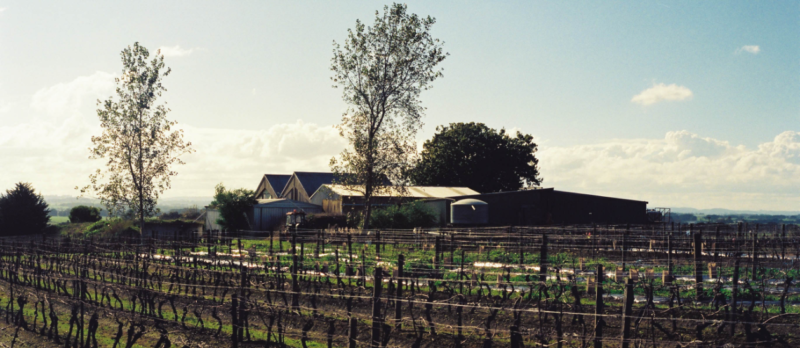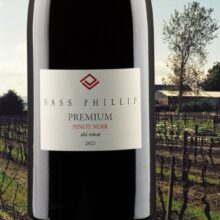
Winery
Bass Phillip
About Bass Phillip
Founded by Phillip Jones in 1979 at the age of 32, having spent an early career in telecommunications and IT research.
Phillip initially planted Cabernet inspired by the wines of Ducru-Beaucaillou at his home vineyard in Leongatha. After many years he realised his choice was in vain and replanted to Pinot and Chardonnay at vine density similar to those in Burgundy at 9,000 vines per hectare.
He was captured by the great wines of Burgundy (eg. Charles Rousseau and Henri Jayer) in the early eighties, which set him on the path of finding an appropriate region and appropriately organic techniques to develop pinot noir wines with depth and fine texture. He laboured for years without results and finally entered the Australian market in 1991. Since then, his Bass Phillip pinots have often achieved the highest ratings in the land, including the nomination of his 2010 Reserve pinot noir as the Australian Wine of the Year. The Bass Phillip vineyards have grown to 14 hectares over the past 25 years, much like a small Burgundy Domaine.
I first came across the wines of Bass Phillip whilst making wine at Yering Station. Tom used to take a splash of vino as partial payment for barrels. Late one afternoon I heard the sound of a cork being pulled from a bottle. Shortly after a half bottle of Bass Phillip Reserve Pinot Noir was in glass ready to devour!
A stunning bottle that inspired, provoking a combination of pleasure and deep thought of the viticulture and winemaking that went into the making of such a profound wine.
Phillip Jones is certainly a unique personality, generous, cantankerous, critical, kind, and single-minded in his search for delicious wine. In truth, few have managed to maintain a working relationship with him.
One of the greatest challenges as the founder of a winery is realising the equity from decades of work scraping together enough money to pay the bills. It’s the ultimate contradiction having no liquidity whilst having all your assets in liquid form!
With no family to take the reins, a sale was always on the cards with Jean-Marie Fourrier of Domaine Fourrier purchasing Bass Phillip in 2020. It speaks volumes of the potential of Gippsland in Victoria and Bass Phillip to produce exceptional Pinot and Chardonnay that a Burgundian Domain was the buyer.
In this new phase of growth moving forward, Jean-Marie Fourrier will begin to take an active and primary role in the management of the vineyards and the wine production process as Chief Winemaker of Bass Phillip wines.
Jean-Marie carries on the development of fine wines with texture and complexity.
In the Vineyard
As a perfectionist, we crop our fruit at incredibly low levels to achieve the objectives in flavour development.
South Gippsland’s “Terroir”
South Gippsland is not only renowned for dairy and beef, but also the giant Gippsland earthworm, which play an active role in the fertilization and airing of the deep mineral-rich soil of the vineyards. The region is blessed with approx.1,000 millimetres of rainfall per annum and a deep, silty loam soil filled with volcanic minerals. High temperatures (mid 30 Celsius degrees) in the summer months are balanced by humidity and late afternoon, cool air from Bass Straight. All these factors contribute to the intense flavours, aromatics and exceptional length in the finish, which are trademarks of Bass Phillip’s vibrant, yet graceful wines.
Following on from the initial plantings three additional sites: Belrose, Issan and Village were planted.
Dense Vines & Low Yields
This is basically a story of “quality overrides quantity”
High density planting is one of the approaches taken by Bass Phillip to prove that Australia can produce a jaw-dropping pinot that is comparable with the best from the Pinot Monarch – Burgundy, France.
Bass Phillip achieves a cropping level of 1.0 -1.3 tonnes per acre (compared to from 2 to 4 tons per acre average in Australia). We believe this contributes to intensity and length of flavour which is not always prominent in Aussie pinots. Many question the economics of this low level of yield, but when the wine-making is driven by an obsession for perfection and instinctive flair, production costs become secondary.
Although a single vine at Bass Phillip barely makes half a bottle of wine, the highly perfumed nose, robust flavors, exquisite textures, profound complexity and minerality contained in each bottle provide a justification for this practice.
In the Winery
We believe strongly in a gentle hand. Racking is kept to a minimum and no pumps are used in the winery. “The difference between good and great Pinot Noir is texture. We try to minimise the bruising effects that pumping can have on this texture.” Ultimately our priority is to produce a wine that is completely natural and which expresses vineyard site. This sounds simple, but such a high standard does require a relentless pursuit of perfection – and a degree of madness.
The Biodynamic practice at Bass Phillip is planned according to the lunar cycles. Adopting these practices means that each vintage of Bass Phillip wines exhibits the characteristics of “mother nature’s” temperament, expressing the harmony of earth, moon and sun. Displaying the natural influences of nature’s power and elegance.
Wines at Bass Phillip are handcrafted with strict scientific analysis and monitored with rigorous quality control. However the story doesn’t end there, the real essence of Bass Phillip’s wine production is to allow the forces of nature to maintain control. Minimal human intervention is practiced wherever possible – no irrigation/pesticides/fertilizers, minimal pumping/ filtration, natural yeast, no fining agents.
The 2023 Vintage at Bass Phillip
As Chief Winemaker Jean-Marie Fourrier and his team continue to shape the estate’s future, the 2023 Bass Phillip vintage emerges as a refined expression of purity, complexity, and richness. Marked by remarkable harmony and an elegant tannin structure, this vintage is further defined by its lower-than-usual yields—enhancing both the rarity and generosity of this allocation, making it truly exceptional.
Where in the World is Bass Phillip?
Bass Phillip is located in and around Leongatha, Gippsland, Victoria, Australia.
